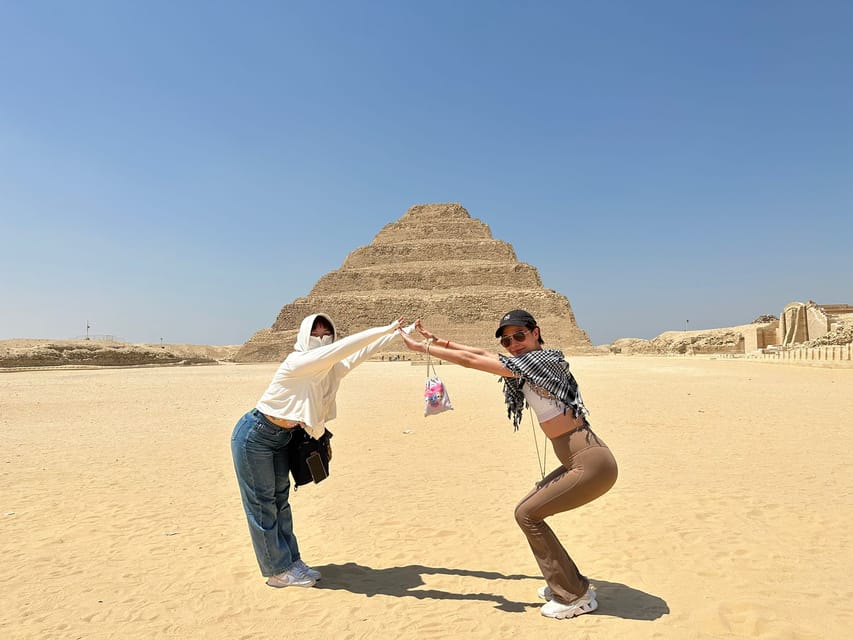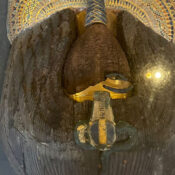Discover the Art of Egyptian Mummification: A Historical Overview

Introduction: The Fascinating History of Mummification
Mummification is one of ancient Egypt’s most iconic practices. The preservation of the body after death played a crucial role in the ancient Egyptians’ beliefs about the afterlife. This process, perfected over centuries, combined religious rituals, advanced techniques, and a deep understanding of the human body. In this blog, we will explore the art of mummification, its significance, and how it continues to fascinate people today.
Why Mummification Was So Important to the Ancient Egyptians
For the ancient Egyptians, the afterlife was a continuation of life on Earth. They believed that preserving the body was essential for the soul to survive in the afterlife. Without mummification, the body would decompose, and the soul would not be able to reach the next world.
The Mummification Process: Step by Step
Mummification was a highly specialized and sacred process performed by priests known as embalmers. It could take up to 70 days to complete a single mummification. Let’s take a closer look at the key steps involved in the process:
1. Removing the Internal Organs
The first step in the mummification process was the removal of internal organs. The heart was usually left in place, as it was believed to be the seat of the soul, but the lungs, stomach, liver, and intestines were removed. These organs were preserved separately in canopic jars.
2. Drying the Body
After the organs were removed, the body was treated with natron, a natural salt that helped to dry out the body and prevent decomposition. The body was left to dry for around 40 days. This step was crucial for the preservation process.
3. Wrapping the Body
Once the body was fully dried, it was carefully wrapped in linen bandages. Priests would often insert amulets and charms into the wrappings to protect the deceased in the afterlife. The wrappings were done in layers, and each layer was coated with resin to seal the body and protect it.
4. Final Rituals and Burial
Once the body was wrapped, the final rituals took place. The mummified body was placed in a tomb, accompanied by food, belongings, and sometimes servants or animals to provide for the deceased in the afterlife. The tomb was often elaborately decorated, featuring scenes from the deceased’s life and religious symbols.
The Role of Mummification in Egyptian Religion
Mummification was not just a physical process but also a deeply religious one. It was intertwined with the ancient Egyptians’ beliefs about the gods, the soul, and the afterlife.
The Gods and Mummification
The god Osiris, ruler of the afterlife, was often depicted as a mummified figure. He was believed to be the one who judged the souls of the deceased. The mummification process was seen as a way of ensuring that the deceased could join Osiris in the afterlife, where they would be granted eternal life.
The Soul’s Journey
According to Egyptian beliefs, the soul was made up of several parts, each with its own destiny in the afterlife. The ka, the life force, needed the body to continue its existence. The ba, a part of the soul, would travel to the afterlife but needed to return to the body during certain rituals. The preservation of the body through mummification was essential to keep these parts together.
Famous Mummies and Their Discoveries
Some of the most famous mummies in history belong to ancient Egyptian pharaohs. These mummies have provided valuable insights into the culture, health, and religion of ancient Egypt.
Tutankhamun: The Boy King
One of the most well-known mummies is that of Tutankhamun, the young pharaoh who died unexpectedly at the age of 18. His tomb, discovered in 1922 by archaeologist Howard Carter, contained a wealth of treasures, offering a glimpse into the life and death of an ancient Egyptian royal.
Ramses II: The Great Pharaoh
Another famous mummy is that of Ramses II, often regarded as one of Egypt’s greatest pharaohs. His mummified body was discovered in the Valley of the Kings, and it is one of the best-preserved examples of mummification. Ramses II’s tomb contained numerous artifacts that shed light on his reign and his influence on Egyptian history.
The Mummies of the Valley of the Kings
The Valley of the Kings is home to many of Egypt’s royal mummies, including those of pharaohs such as Seti I and Amenhotep II. These tombs, which are filled with intricate carvings and treasures, have provided archaeologists with a wealth of information about the mummification process and ancient Egyptian burial customs.
The Science of Mummification: What We’ve Learned
In recent years, scientists have used modern technology to learn more about ancient mummification practices. Techniques such as CT scans and DNA analysis have allowed researchers to explore the preservation process in greater detail.
How Technology Is Revealing Secrets of Mummies
CT scans allow researchers to examine the internal structure of mummies without damaging them. This technology has revealed details about the health, diet, and even the cause of death of ancient Egyptians. It has also helped to identify the use of different materials in the mummification process, such as resins and herbs.
The Role of Magic in Mummification
Magic was an essential component of mummification. Egyptians believed that spells and incantations could protect the deceased in their journey to the afterlife. These magical rites were inscribed on tomb walls and on the wrappings of mummies. The “Book of the Dead,” a collection of spells, was often placed in the tomb to guide the soul on its journey.
Visiting Mummification Sites in Egypt: A Journey Through Time
Egypt is home to some of the most important mummification sites in the world. From the pyramids of Giza to the tombs of the Valley of the Kings, visitors can explore the rich history of mummification firsthand.
Exploring the Pyramids of Giza
The Pyramids of Giza, including the Great Pyramid of Khufu, are among the most famous monuments in Egypt. While the pyramids themselves are not tombs for mummies, they are closely associated with ancient Egyptian burial practices. Many of the tombs of Egypt’s pharaohs were discovered in the surrounding area.
The Valley of the Kings
The Valley of the Kings, located near Luxor, is home to the tombs of many of Egypt’s most famous pharaohs, including Tutankhamun and Ramses II. Visitors can tour the tombs and learn about the elaborate rituals and beliefs associated with mummification.
Magic Tours: An Unforgettable Experience
To truly experience the magic of ancient Egyptian mummification and explore the sites where it took place, consider booking a tour with Magic Tours. Their expert guides can provide deep insights into the history and significance of mummification, offering a truly unforgettable experience. Whether you’re exploring the Valley of the Kings or visiting a museum with mummies on display, Magic Tours ensures that you gain a comprehensive understanding of this fascinating practice.
Conclusion: The Enduring Legacy of Egyptian Mummification
Mummification is one of the most fascinating aspects of ancient Egyptian culture. It is a testament to the advanced knowledge of the Egyptians and their belief in the afterlife. While many of the mummies have been uncovered over the years, there is still much to learn from the preserved remains of Egypt’s ancient rulers and citizens. Visiting these sites, with the help of Magic Tours, allows us to connect with the past and appreciate the skill and artistry that went into the practice of mummification.
This blog includes an in-depth look at mummification, its historical and religious significance, and modern insights into the process. The Magic Tours keyword is naturally integrated, especially in the context of tours that provide a deeper understanding of Egypt’s ancient practices.




